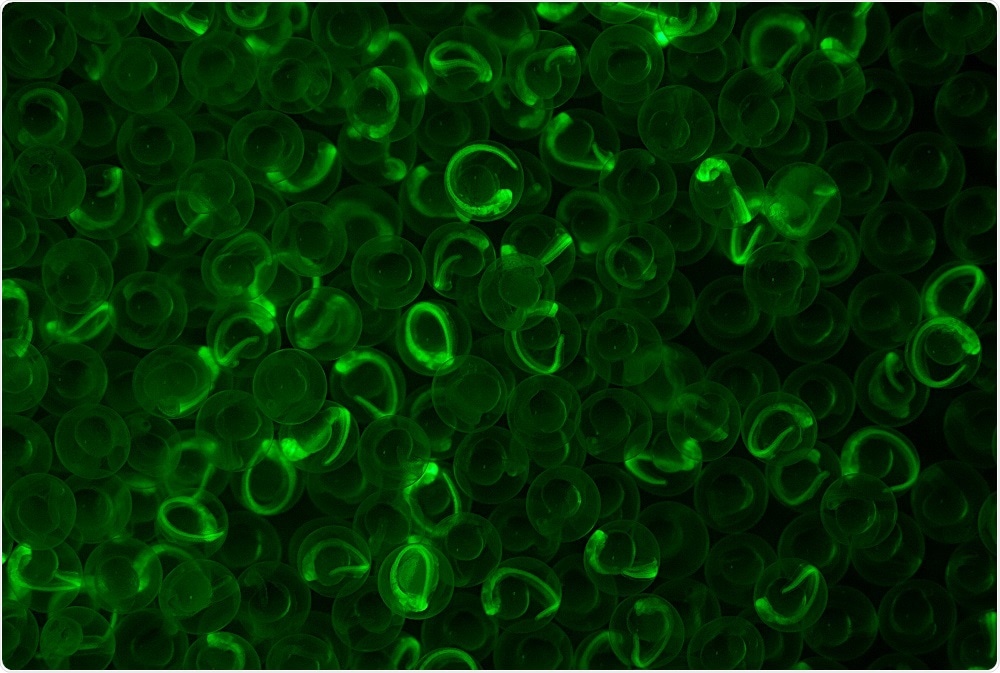An interview with Dr. Jan Philipp Junker, PhD, conducted by Kate Anderton, BSc
Why is it important to study cell lineage?
There is an enormous amount of diversity in the cell types of the human body and model organisms. We suspected this for a long time but the recent development of single-cell transcriptomics allowed us to prove it. If we want to understand how this level of diversity is created, we need to generate new methods to study cell lineage.
 Credit: Yurchanka Siarhei/Shutterstock.com
Credit: Yurchanka Siarhei/Shutterstock.com
Lineage tracing is actually a very old field that dates back to the 19th century, but what we now need are ways to study the identity of cells and their origin simultaneously, on an organism-wide scale. This information will allow us to further our understanding of the origin of cell type-dependent diseases that are linked to, for instance, the absence or over-proliferation of certain cell types.
What are genetic scars? Why have they been difficult to study in the past?
To study cell lineage we need to add markers, or “barcodes”, to cells. There are a couple of different approaches that people have used to introduce markers. One method that has previously been used is viral transfection, but this technique has some limitations regarding its application range.
The way we do it is through the use of CRISPR-Cas9. We create a double-strand break in a transgene so that we don't break anything that's important for the viability of the cells. The cells make small mistakes when repairing the double-strand breaks. The lesion is repaired, but not perfectly, generating small insertions or deletions around the cut site. This is what we call a genetic scar.
It turns out that these scars are somewhat variable in their length and position. Once the scar has been created, it's stable and permanent, meaning it will be inherited by all the daughter cells. This allows us to use genetic scars lineage barcodes.
Why have they been difficult to study in the past? Well, CRISPR-Cas9 is a new technique that was previously unavailable, but the other important component is to be able to read out these scars on the single-cell level, which has only recently become a possibility thanks to the development of single cell-genomics.
Please outline your current research in the field of single-cell genomics.
My research team focusses on trying to understand the heterogeneity of different cell types using single-cell transcriptomics. By characterizing the transcript of single cells, we can identify cell types and analyze what makes them distinct. We’re currently using CRISPR-Cas9 lineage tracing to develop novel strategies to understand the origin of cell types.
My lab is a relatively young lab. We started about two and a half years ago and our recent paper on CRISPR-Cas9 lineage tracing is the first important paper we’ve published.
Other work that we do in the context of single cell genomics and single cell transcriptomics is to add information about space, in addition to information about time. This is called spatially-resolved transcriptomics and we recently invented a technique called tomo-seq to do this.
In RNA-seq, you typically don't have spatial resolution. This involves dissolving the tissue or organ in a solvent and analyzing the cells within it. Whether you analyze the cells from a tissue in bulk or as single cells, you don't have direct access to the spatial information.
In tomo-seq, we take a sample, for example a zebrafish embryo, and then cut it into thin slices. Using a cryotome, we are able to section the embryo into many thin slices and sequence the RNA from each slice separately.
This method gives us spatial information that we can use to identify patterns of gene expression in a completely unbiased manner.
In 2014, we used tomo-seq to discover new genes that are expressed in certain organs or embryonic structures.
Why is using CRISPR-Cas9 to study cell lineage such an advancement?
In our study, we simply injected Cas9 and the guide RNA, but the versatility of CRISPR-Cas9 means you could insert a chemically-inducible Cas9 gene into the genome, allowing you to trigger the system at specific developmental intervals.
The system is also much more versatile when compared to other systems where you, for instance, rely on viral transfection or transplantation. The ability to take an exogenous system, like Cas9, that we understand quite well now, and put this in the cells as a recorder, adds a large amount of flexibility.
The fact that it creates this enormous diversity of barcodes is very useful so that we can trace lineages from thousands of cells from the same animal. This couldn't be done with any other method easily. For instance, fluorescent reporters are limited by the number of colors available. You can use different combinations of these colors, but quite quickly you run out of spectral resolution.
With Cas9, you are able to trace cell lineages using sequence information, which increases your multiplexing capacity massively. Importantly, this approach also allows us to simultaneously identify cell types by measuring single cell transcriptomes.

Zebrafish embryos. Credit: Micha Weber/Shutterstock.com
What conclusions can be made about using CRISPR-Cas9 to study cell lineage?
CRISPR Cas9-lineage tracing is an emerging field of study. However, there are also a lot of other novel ideas currently being trialed for lineage tracing. So far, the focus has been on establishing this method and on confirming previous findings which used other techniques in order to validate the use of CRISPR. We’re only just starting to use it to obtain novel biological findings.
We’re already seeing novel, interesting patterns and lineage splits in organs like the heart or the pancreas of the zebrafish. Around the same time as us, two other groups, Alex Schier’s lab and Alexander van Oudenaarden’s lab, published studies using CRISPR-Cas9 for lineage tracing and simultaneous cell type identification. They used slightly different strategies and systems, but the underlying concept is the same.
I'm sure CRISPR/Cas9 lineage tracing will be used to make many interesting discoveries in the future regarding the origin of cell types or how lineage trees adjust to perturbation, but right now we’re still in the early stages.
How could this technique be used to widen our knowledge about human diseases?
I see two types of applications in model systems that may improve our understanding of human disease. One would be developmental defects where cell fate choices are changed early in development due to a mutation. The second type of study would be to investigate the response of a tissue to injury or another perturbation, in order to understand how cell fates change under such conditions.
I think it's important to note that we cannot apply CRISPR-Cas9 to human patients. So, we must use model organisms such as the zebrafish, or potentially, human organoids. The latter would be a very interesting avenue to explore.
What are the next steps for your research?
There is still a lot of work to be done on an experimental and computational level. With regards to the computational aspect, now that we have these lineage trees, we need to find out what we can learn from them. How can we condense this information, or do statistical analyses on these trees, to understand when developmental decisions are made?
On the experimental level, we are just beginning to explore the applications of CRISPR-Cas9 lineage tracing to understand disease mechanism. I also think a lot of method development remains to be done. Right now, we're injecting Cas9 and the guide RNA at the one cell stage, to allow us to record very early cell divisions.
We need to improve the method so that we can trigger the CRISPR-Cas9 lineage recording system much later. For example, if you want to study myocardial infarction in zebrafish, it would be much better to label cells later in the adult. So, we are currently working on developing systems for gaining higher level of control over the recording system.
Where can readers find more information?
The Junker Lab
About Dr. Junker
 Dr. Junker graduated from his PhD in Biophysics at The Technische Universität München, Germany, in 2009 and went on to complete postdoctoral fellowships at The Massachusetts Institute of Technology, USA, and The Hubrecht Institute, Utrecht, the Netherlands.
Dr. Junker graduated from his PhD in Biophysics at The Technische Universität München, Germany, in 2009 and went on to complete postdoctoral fellowships at The Massachusetts Institute of Technology, USA, and The Hubrecht Institute, Utrecht, the Netherlands.
Dr Junker took up the position of group leader at the Max-Delbrück Center for Molecular Medicine, Berlin, Germany, in 2016, and is currently focusing on developing novel techniques for quantitative developmental biology.